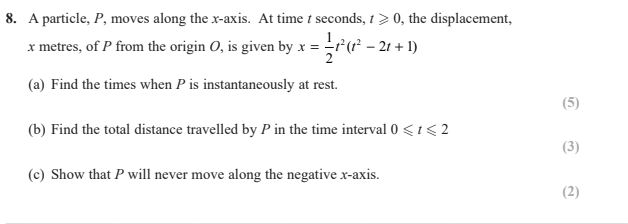How to solve this variable acceleration Q, parts a to c?

thank you
thank you
1 Answer
a)
b)
c) see below
Explanation:
The expression for the position can be rewritten in the form :
a) The velocity is
Thus the particle is at rest (
b) Since the velocity, which in this case is a continuous function, vanishes at
- displacement between
#t=0# and#t = 1/2# :
#x(1/2)-x(0) = 1/2times (1/2)^2(1/2-1)^2-0#
#qquad = 1/32# - displacement between
#t=1/2# and#t = 1# :
#x(1)-x(1/2) = 0-1/2times (1/2)^2(1/2-1)^2#
#qquad = -1/32# - displacement between
#t=1# and#t = 2# :
#x(2)-x(1) = 1/2times (2)^2(2-1)^2-0#
#qquad = 2#
The distances traveled in these three intervals are
Thus the total distance traveled is
c) It is easy to see that

